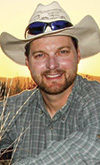On public lands in Idaho, there is an unwritten rule of resting pastures for two years after a fire. The thought behind this policy is to allow native vegetation time to recover from the fire disturbance and minimize the potential detrimental effects of livestock grazing when plants might be vulnerable. The challenging part of this policy is that there is little scientific information on this topic to confirm or refute this concept. The University of Idaho has put together a group to better understand the scientific needs to answer what seems to be a very simple question: When is the best time to graze after a fire? This question seems simple but is quite challenging to answer because there are many factors that contribute to the context.
The condition of the range before a fire is the starting point to answer this question. An entire pasture of cheatgrass burning would likely not need two years of rest to further establish cheatgrass on the site. In this case, grazing might be able to be immediately applied in the fall after the fire to help manage annual grasses, coupled with seeding to improve the site from what it was previously. Conversely, a pristine native range pasture would likely require more care and attention to the timing of grazing in the first couple of years after a fire, allowing native vegetation to recover before being challenged by grazing. Most lands lie somewhere between these two extremes, which requires more management decisions on how to balance the use of grazing to minimize annual grass establishment while not overgrazing sensitive, desired vegetation.
The severity of the fire on desired vegetation will likely dictate how long plants need to recover after the fire. Studies in Burns, Oregon, have shown that grass morbidity occurs more often around shrubs, where the fire tends to burn hotter and longer. This “residence time” appears to be the leading factor in killing grasses when burned. Higher brush sites will likely have less surviving vegetation and will require more carefully managed grazing in the years after.
All of this needs to be evaluated specifically to look at two main things:
- How the fire burned through the pastures: Complete burns would mean that most of the pasture was actively burned and is black afterward. This would indicate a more intense fire and would likely require more monitoring and potentially more rest before grazing. But if the fire created a patchwork of burned and unburned areas, this would suggest a lower intensity fire and give an opportunity for unburned locations to naturally reseed the burned areas. This would suggest a quicker recovery and, thus, a resumption of grazing earlier.
- Total pasture burned: This also indicates suitability for grazing. If 10% of a pasture was actively burned, then it is possible that livestock could be kept off the burned area with some management and allow grazing in the unburned portion. This could greatly mitigate the detrimental and financial challenges producers face when they are not able to graze as planned. There have been producers who have previously shown public land managers that they have sufficient control of their cattle to exclude them from sensitive areas after a burn and have been allowed to graze partially burned pastures.
Lastly, weather after the fire can have major effects on recovery. Adequate fall moisture, followed by an above-average rain year after the burn, would suggest plants will recover much quicker, and stock could be returned as early as the following fall. Coupling drought after a fire can be catastrophic to the plant community and take more than two years to adequately recover.
In rangeland ecology, most questions are answered with “it depends” because there are so many variables that can change the outcome. This is the main reason why a blanket two-year policy is challenging. When I was a grad student at the University of Idaho, we met a producer who had not grazed one pasture for 12 years due to seven fires. In his situation, the bunchgrass community was resilient and came back well enough to burn again before the two years were over. In this context, waiting because of a standard policy didn’t make sense, but there are others that may wait longer because recovery metrics are not met within that two-year time frame.
The University of Idaho is actively working to identify what research questions need to be asked in order to better understand these complexities and better assist managers with the information they need to be better stewards of our public and private lands in Idaho. This team is developing future research questions to obtain the needed understanding of how these and other factors affect plant recovery and livestock grazing. If you have topics about grazing after a fire that you would like this group to evaluate, please email Chris Schachtschneider, Jim Sprinkle or Scott Jensen.






